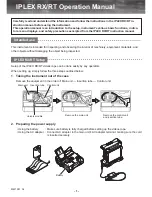
Chapter 3
Connecting the Signals
DAQPad-MIO-16XE-50 User Manual
3-28
ni.com
As an output, the TRIG2 signal reflects the posttrigger in a pretriggered
acquisition sequence, even if the acquisition is being externally triggered
by another PFI. The TRIG2 signal is not used in posttriggered DAQ. The
output is an active high pulse with a pulse width of 50 to 100 ns. This output
is set to high-impedance at startup.
Figures 3-14 and 3-15 show the input and output timing requirement for the
TRIG2 signal.
STARTSCAN Signal
Any PFI signal can externally input STARTSCAN, which is available as
an output on the PFI7/STARTSCAN screw terminal.
Refer to Figures 3-12 and 3-13 for the relationship of STARTSCAN to the
DAQ sequence.
As an input, the STARTSCAN signal is configured in the edge-detection
mode. You can select any PFI signal as the source for STARTSCAN and
configure the polarity selection for either rising or falling edge. The
selected edge of the STARTSCAN signal initiates a scan. The sample
interval counter is started if you select internally triggered CONVERT*.
As an output, the STARTSCAN signal reflects the actual start pulse that
initiates a scan, even if the starts are being externally triggered by another
PFI. You have two output options. The first is an active high pulse with
a pulse width of 50 to 100 ns, which indicates the start of the scan. The
second option is an active high pulse that terminates at the start of the last
conversion in the scan, which indicates a scan in progress. STARTSCAN is
deasserted t
off
after the last conversion in the scan is initiated. This output
is set to high-impedance at start up.
















































